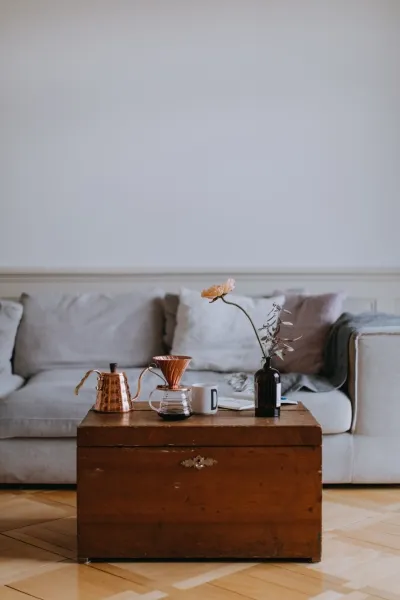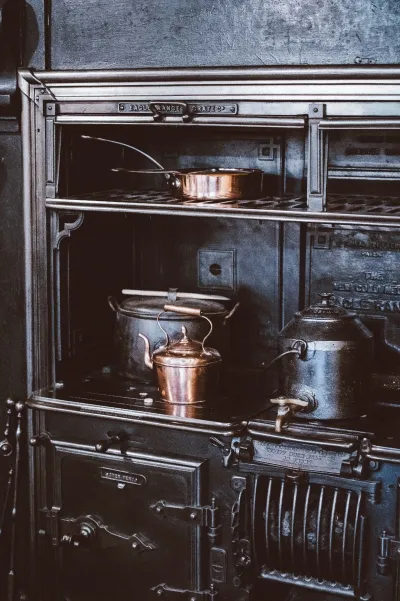Copper has been a familiar and widely utilized metal since ancient Vedic times. It has numerous health benefits and utilitarian benefits as well. Copper vessels are used for maintaining good health. Objects like copper jewelry, statues, and decorative pieces are also popular. Copper never rusts but it can tarnish. In this article, I explain some easy ways to clean copper and care for copper vessels, utensils, pitchers, pots, and other copper objects in your home.
READ MORE: Copper: The Next Fountain Of Youth? | Ashwagandha Benefits, Dosage, Side Effects + More

Copper In Ancient Vedic Times
The Sanskrit name for copper is Tamra. In the Ayurvedic scriptures, mainly in the Charaka Samhita, there are many references related to the health benefits of copper. Copper is used internally as well as externally in the Ayurvedic system of medicine, however, the amount for internal use is very low. It is advised to take copper internally under supervision only. Copper is never advised to be taken directly. It is advised to take the form of tamra bhasma. A bhasma or ash is a process in which the metal is detoxified extensively by various methods described in Ras Shastra and other Ayurvedic textbooks.
The ancient seers suggested to drink copper water in the morning. Water stored in a copper vessel or tamra patra overnight is called copper water. It reputedly has benefits for good health. Studies have shown that copper water has antibacterial properties, especially against the bacteria which cause diarrhea.1
Copper is also an essential trace mineral. The RDA (recommended dietary allowance) for adults is 900 μg/day. Copper functions as a component of a number of metalloenzymes and it is required for various fundamental biological functions.2
The Charaka Samhita holds ample references regarding the use of copper for making different equipment and instruments. Jihva nirlekhana dravya or tongue scrapers, tamra bhajana or copper vessels, vasti netra karnika, or nozzle of enema pot were all made with copper.
READ MORE: How To Use A Neti Pot Correctly | 16 Morning Routine Ideas From Ayurvedic Medicine
Copper Tarnish + Patinas
Tarnish is a thin layer of corrosion that forms over the outermost layer of copper. It occurs when copper undergoes a chemical reaction. Tarnish is a self-limiting process. Only the top few layers of copper react. This layer of tarnish seals and protects the underlying layers from reacting. Tarnish actually preserves the underlying metal in outdoor use, and in this form is called a patina.
How Copper Tarnishes
Copper begins to oxidize when it’s first exposed to the oxygen in the atmosphere, rain, condensation, and humidity. Sometimes other chemicals in the atmosphere may also lead to oxidation in copper.
Tarnishing occurs in stages. In the early stages of copper tarnish, there is a dull tan. This dull tan leads to a dark grey and blue color. This tarnish then turns black and then after sometimes becomes the aqua green patina. This aqua-green patina is commonly associated with tarnished copper.
The Statue of Liberty gets its green color from the natural patina formed on its copper surface.3
READ MORE: 8-Step Ayurvedic Morning Ritual | 5 Apple Cider Vinegar Side Effects + 5 Fermented Foods Better Than Apple Cider Vinegar
Caring For Copper: 7 Simple Ways For Cleaning Copper
Using just a few simple household ingredients, you can easily care for copper, protecting it from tarnishing.
In the Ayurvedic textbook of Rasa Shastra, it is mentioned that to clean this green layer use mild acidic products. Scrub the green layer using acid products and the stains will vanish away.4

Lemon Or Lime Scrub
You can use natural mildly acidic products like lemon or lime. Lemon or lime contains citric acid. Take a piece of juicy lemon or lime. Rub this lemon or lime piece over your copper vessel. Also, rub the interior of the vessel. Keep it on for a few minutes, then rinse it with water. If the vessel is greasy, you can use a mild detergent. Dry and clean it using a soft cloth.
Lemon And Salt Scrub
These two are the most commonly available ingredients in any kitchen. They are the most reliable method to clean copper utensils. Take juicy lemon or lime pieces. Take some salt in a bowl and dip the lemon or lime piece in the salt. Then rub this lemon or lime piece with the salt all over the copper vessel. Keep it on for a few minutes and then rinse with water.
You can use this alternate method too. Take some lemon or lime juice and add some salt to the lemon or lime juice. Mix well. Rub it gently all over the copper utensil with the help of a rag. Keep it like this for a few minutes and then rinse with water.
You can also make a paste of lemon juice and salt and apply it to obstinate areas like the bottom and edges where it seems hard to remove tarnish. Leave this paste on for about half an hour and keep scrubbing periodically. Finally, rub it gently against the vessel to get rid of stains.
You can try cleaning copper with vinegar too.
Vinegar And Salt Scrub
You can use vinegar to clean copper vessels and utensils too. Mix vinegar and salt and stir for some time to mix well. Apply it to your copperware. Rub it in to remove the stains. Rinse with water and dry with a soft cloth.
Or, you can take one cup of white vinegar and one tablespoon of salt into a large pot. Fill it with water. Put the copper item into the pot. Bring it to a boil and boil until the tarnish comes off.
Homemade Copper Polish
Mix equal parts flour, salt, and any powder detergent. Add a little bit of white vinegar, lemon juice, and some water to this. Mix all things well. Take a soft sponge or cloth. Pour some mixture onto the copper vessel. Rub the affected copper vessel with it. Rinse with water and dry thoroughly.
Tamarind For Cleaning Copper (Tamarind Paste Polish)
Take some tamarind and put it in some water. Make a paste of tamarind and water. Apply this paste all over your copper vessel. Leave it for a few minutes and then rinse it with water and dry it.
Cleaning Copper With Ketchup (Tomato Juice)
Rinse the copper vessel with hot water. Scrub it down with ketchup or tomato juice using a rag in a circular motion. Rinse away the juice with water.
Mild Detergent
Take a few drops of dish soap or detergent on plain steel wool. Scrub the copper with water until it shines. Rinse off the soap and dry off with a clean rage to remove the residue.
You can use mild detergent and hot water whenever the vessel is greasy. In cases where you need a little bit of force while rubbing to remove the tarnish, you can use steel wool in place of a rag or soft cloth.
Waxing Copper
If you have some artifacts, decorative pieces, or a tabletop, you can use copper wax after cleaning for more shine and luster. Copper wax is made for copper products. It is commercially available at most hardware stores. You can choose organic or chemical-based copper wax according to your preference. If you want to coat your copper with a protective layer then take some copper wax and apply it to a rag. Buff it away with a clean cloth in a circular motion. Instructions are also included in the copper wax package.
Cleaning Copper Without Removing Patina
If you have statues, jewelry, medals, or other household items made of copper and you want to clean these things without removing the green layer or patina, follow these instructions. A copper patina reflects the age and history of copper. All you need to do is clean the copper object with the help of a soft cloth and a soft brush. Remove all the dust and grime. Then apply a thin layer of clear paste copper wax with the help of a paint brush. Let the wax dry and remove the wax residue with the help of a soft cloth.










0 Comments